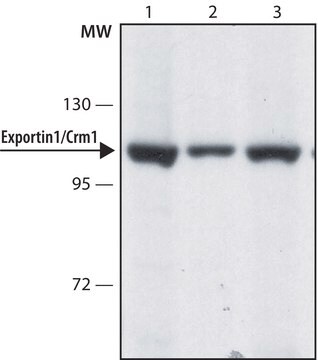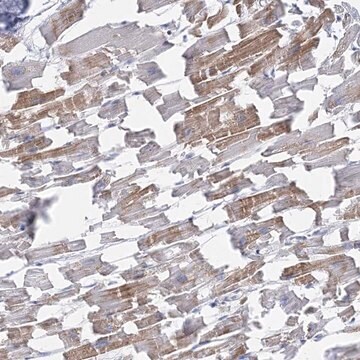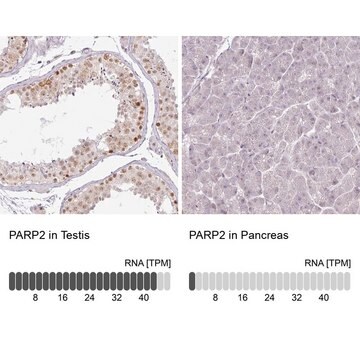SAB4200146
Anti-AMSH-LP / STAMBPL1 (C-terminal) antibody produced in rabbit
~1 mg/mL, affinity isolated antibody
Sinónimos:
Anti-ALMalpha, Anti-AMSH-FP, Anti-AMSH-like protease, Anti-STAM binding protein-like 1, Anti-associated molecule with the SH3 domain of STAM (AMSH) like protein
About This Item
Productos recomendados
origen biológico
rabbit
conjugado
unconjugated
forma del anticuerpo
affinity isolated antibody
tipo de anticuerpo
primary antibodies
clon
polyclonal
formulario
buffered aqueous solution
mol peso
antigen ~50 kDa
reactividad de especies
monkey, canine, human, rat, bovine, mouse
envase
antibody small pack of 25 μL
concentración
~1 mg/mL
técnicas
indirect immunofluorescence: 5-10 μg/mL using human HeLa cells
western blot: 2.5-5.0 μg/mL using whole extracts of mouse NIH-3T3 cells
western blot: 5-10 μg/mL using using whole extracts of rat NRK cells
Nº de acceso UniProt
Condiciones de envío
dry ice
temp. de almacenamiento
−20°C
modificación del objetivo postraduccional
unmodified
Información sobre el gen
human ... STAMBPL1(57559)
mouse ... Stambpl1(76630)
Descripción general
Aplicación
- immunoblotting
- immunofluorescence
- western blotting
Acciones bioquímicas o fisiológicas
Forma física
Cláusula de descargo de responsabilidad
¿No encuentra el producto adecuado?
Pruebe nuestro Herramienta de selección de productos.
Código de clase de almacenamiento
10 - Combustible liquids
Punto de inflamabilidad (°F)
Not applicable
Punto de inflamabilidad (°C)
Not applicable
Certificados de análisis (COA)
Busque Certificados de análisis (COA) introduciendo el número de lote del producto. Los números de lote se encuentran en la etiqueta del producto después de las palabras «Lot» o «Batch»
¿Ya tiene este producto?
Encuentre la documentación para los productos que ha comprado recientemente en la Biblioteca de documentos.
Nuestro equipo de científicos tiene experiencia en todas las áreas de investigación: Ciencias de la vida, Ciencia de los materiales, Síntesis química, Cromatografía, Analítica y muchas otras.
Póngase en contacto con el Servicio técnico





![(3RS)-9-Fluoro-3-methyl-10-(4-methyl-4-oxidopiperazin-1-yl)-7-oxo-2,3-dihydro-7H-pyrido[1,2,3-de]-1,4-benzoxazine-6-carboxylic acid certified reference material, TraceCERT®, Manufactured by: Sigma-Aldrich Production GmbH, Switzerland](/deepweb/assets/sigmaaldrich/product/structures/366/816/7f46918d-8faa-4d56-a456-b7eb211d6ae9/640/7f46918d-8faa-4d56-a456-b7eb211d6ae9.png)


